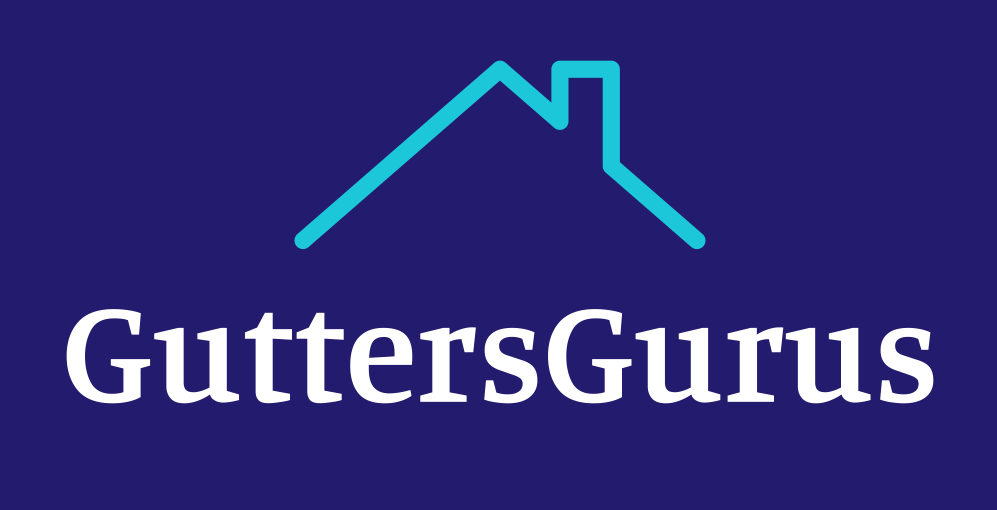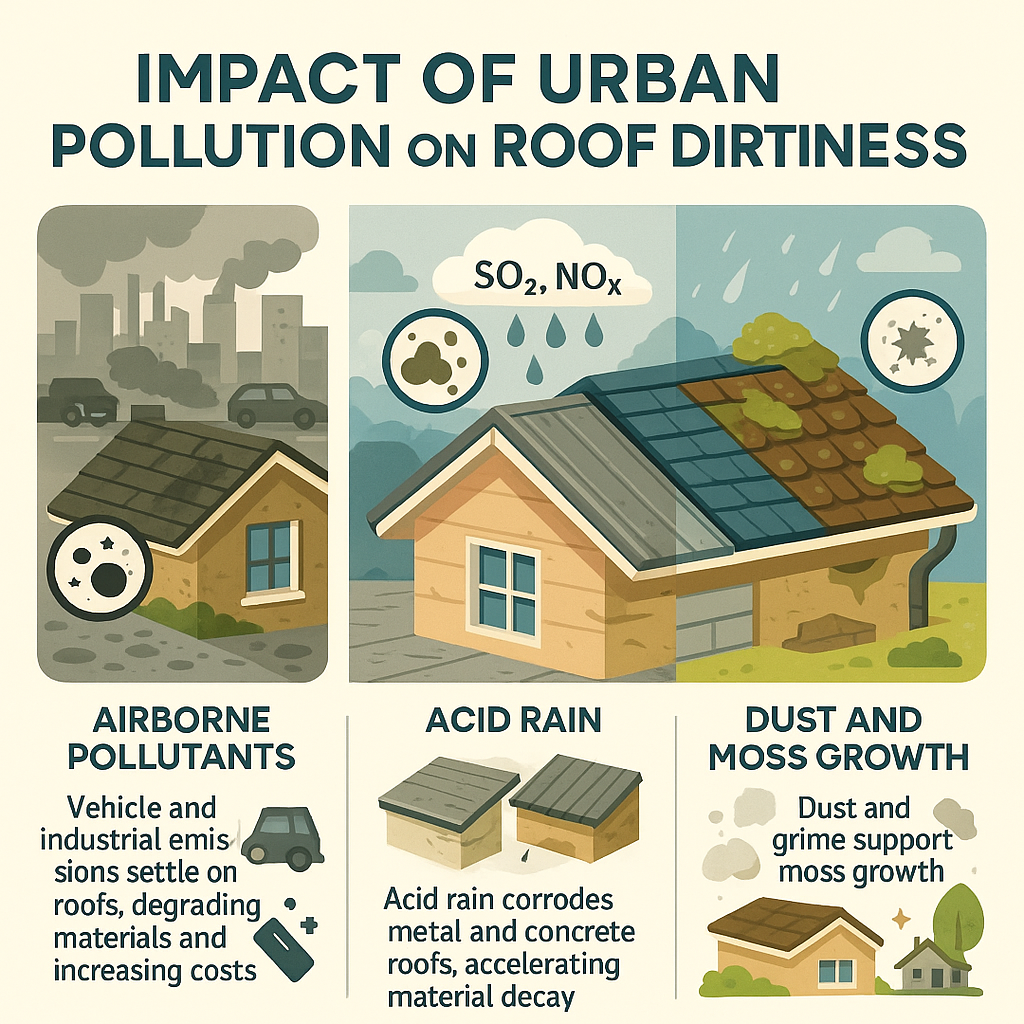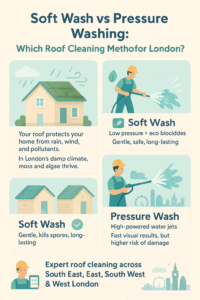The Impact of Urban Pollution on Dirty Roofs and How to Fix It
Urban pollution is more than just a health concern—it can seriously affect the condition of your home, especially the roof. From soot and dust to moss and algae, the buildup caused by air pollution doesn’t just ruin curb appeal—it can shorten your roof’s lifespan and lead to costly repairs. In this post, we’ll explore what causes roof dirtiness in cities and how homeowners can prevent or clean it with effective solutions.
What Causes Roofs to Get Dirty in the City?
Several types of pollution are to blame for dirty rooftops:
Airborne particles and vehicle exhaust stick to roof surfaces and accelerate wear and tear.
Acid rain, formed when sulfur dioxide and nitrogen oxide combine with moisture, corrodes roofing materials—especially concrete and metal.
Dust storms and fine particles collect quickly on flat or sloped roofs, creating the perfect environment for moss and algae to grow.
Even the type of roof matters. Flat roofs collect more water and dust, while sloped ones are more vulnerable to moss and algae growth. Metal roofs may resist corrosion better, but they’re not immune to acid rain damage.
Why a Dirty Roof Is More Than Just an Eyesore
Dirty roofs come with real consequences. Here are a few you should know:
1. Shorter Roof Lifespan
Pollution speeds up wear on roofing materials—leading to cracks, rust, or even structural damage over time. A neglected roof may need full replacement much sooner than expected.
2. Water Damage Risks
Debris and dirt can block drainage paths, causing water to leak inside. That can lead to mold, mildew, and expensive damage to walls, ceilings, and flooring.
3. Higher Maintenance Costs
The longer a roof stays dirty, the more likely it’ll need major repairs—or replacement. Regular maintenance is far more affordable in the long run.
Smart and Safe Roof Cleaning Methods
There are a few good ways to keep your roof clean and protected:
Gentle Cleaning with Natural Solutions
Mix water with vinegar or baking soda for a non-toxic way to clean surface stains and grime. A soft brush or sponge helps remove dirt without harming the material.
Pressure Washing—With Caution
Pressure washers can be effective, but they should be used carefully. For older or delicate roofs, a low-pressure setting is recommended to avoid damaging shingles or tiles.
Eco-Friendly Roof Cleaners
Some chemical solutions are safe for both the environment and your roof. Algae-resistant sprays and moss-control products help prevent future buildup if applied regularly.
Preventive Maintenance Tips
Routine care makes a huge difference. Here’s what you can do:
Clean your roof at least once a year—spring and fall are ideal.
Install water-resistant and anti-moss coatings to block moisture and dirt.
Improve drainage to reduce water accumulation, especially on flat roofs.
Consider planting trees and greenery nearby to filter pollution and create a cleaner environment overall.
At Guttersgurus, we specialize in roof cleaning and gutter maintenance services designed to protect your home from the harmful effects of pollution. Whether you’re dealing with visible dirt or just want peace of mind, our team is here to help.
FAQ – Roof Cleaning Questions Answered
When is the best time to clean my roof?
Spring and fall, when the weather is mild and there’s less moisture in the air—this helps the roof dry faster and prevents new algae from forming.
Is pressure washing safe for all roof types?
Not always. Older or sensitive roofing materials may be damaged by high-pressure water. In these cases, soft washing is a safer option.
How can I prevent moss and algae growth?
Use anti-moss treatments regularly, make sure your roof drains properly, and avoid letting leaves or debris accumulate.




